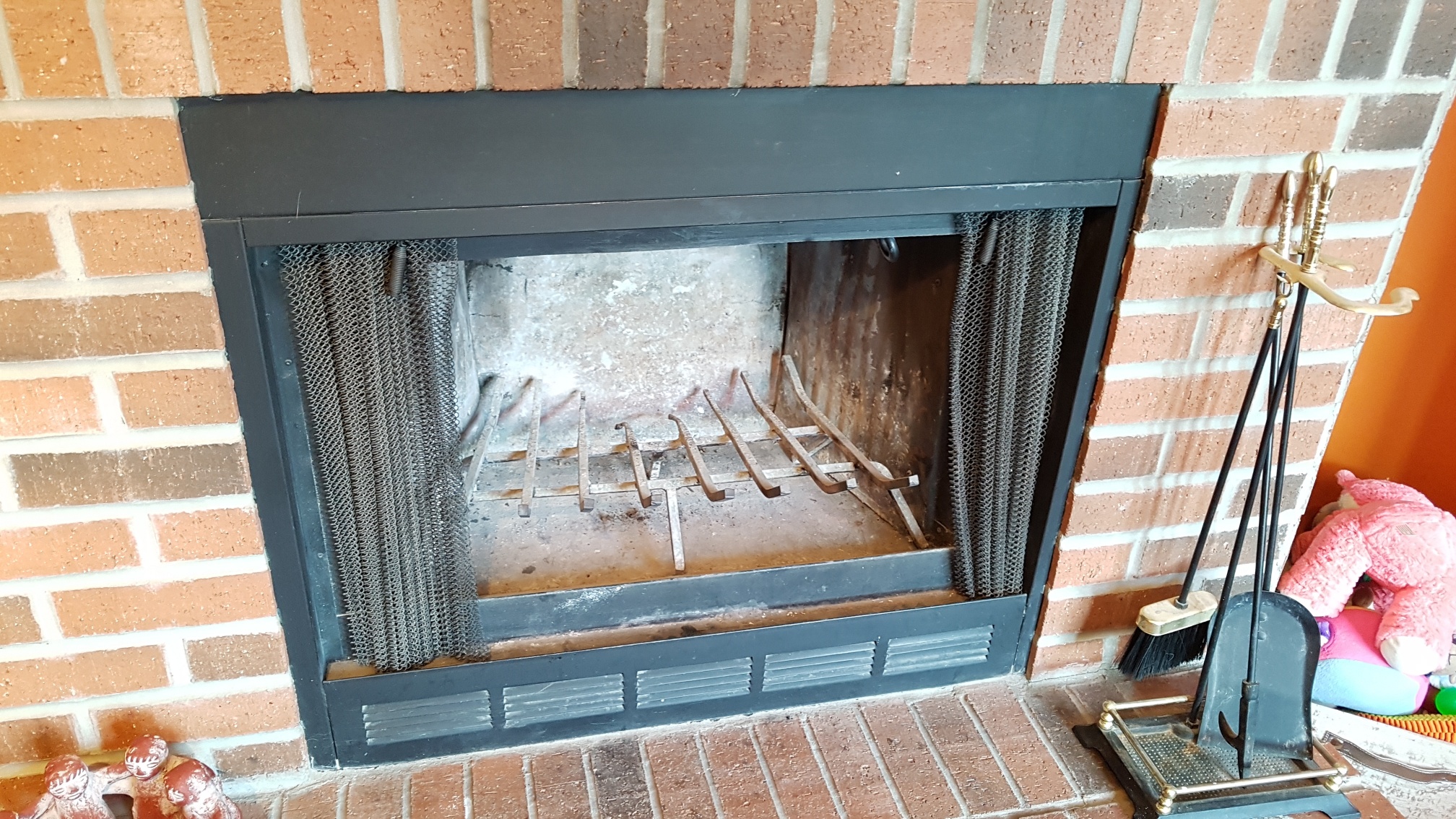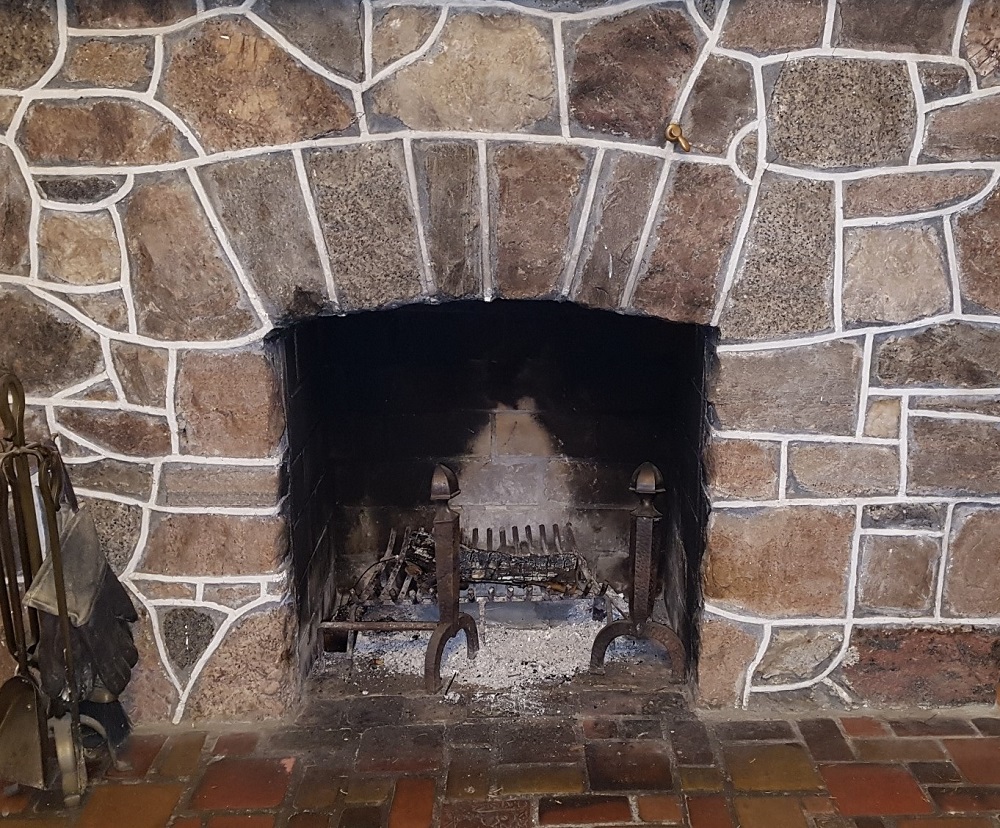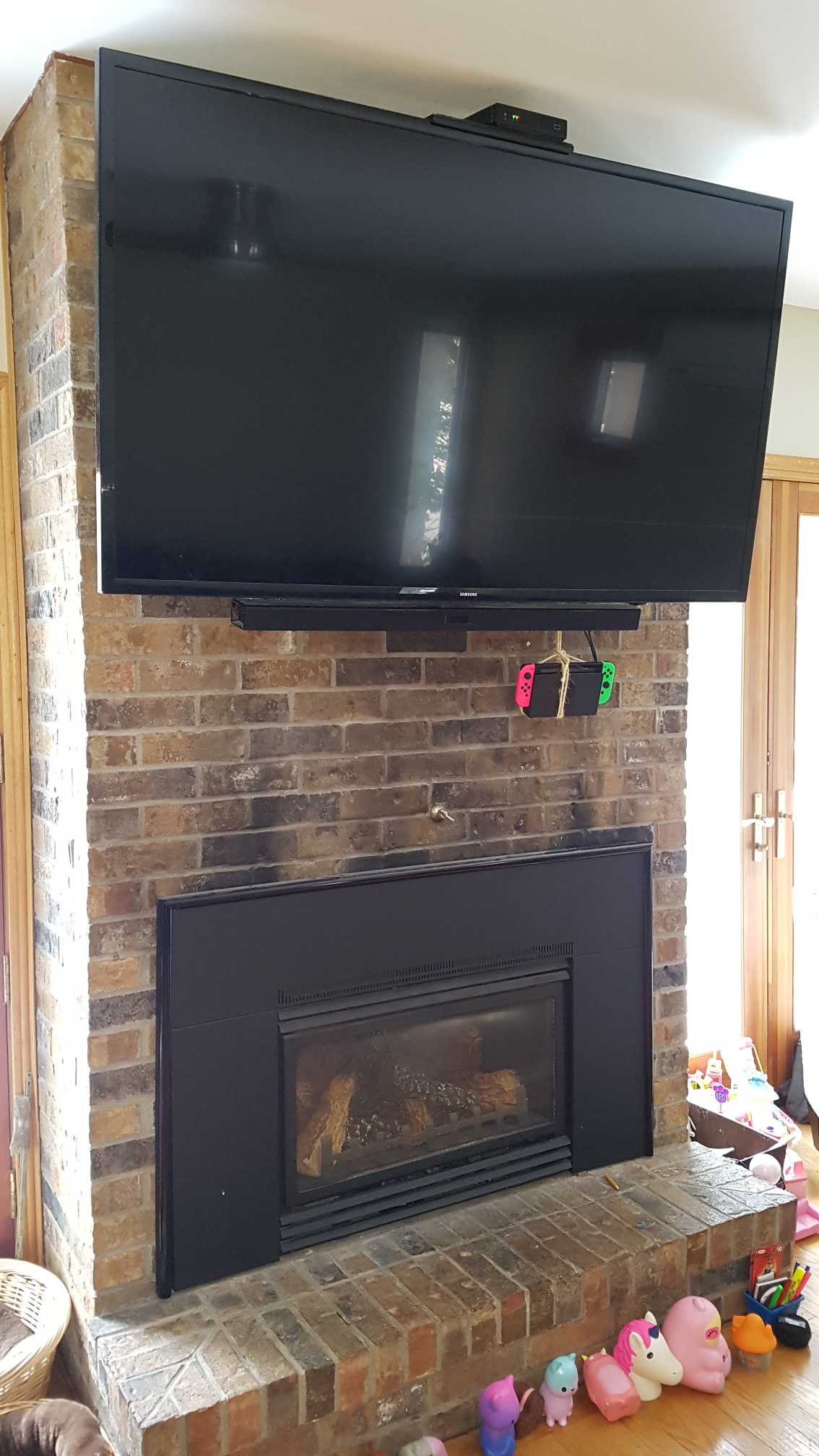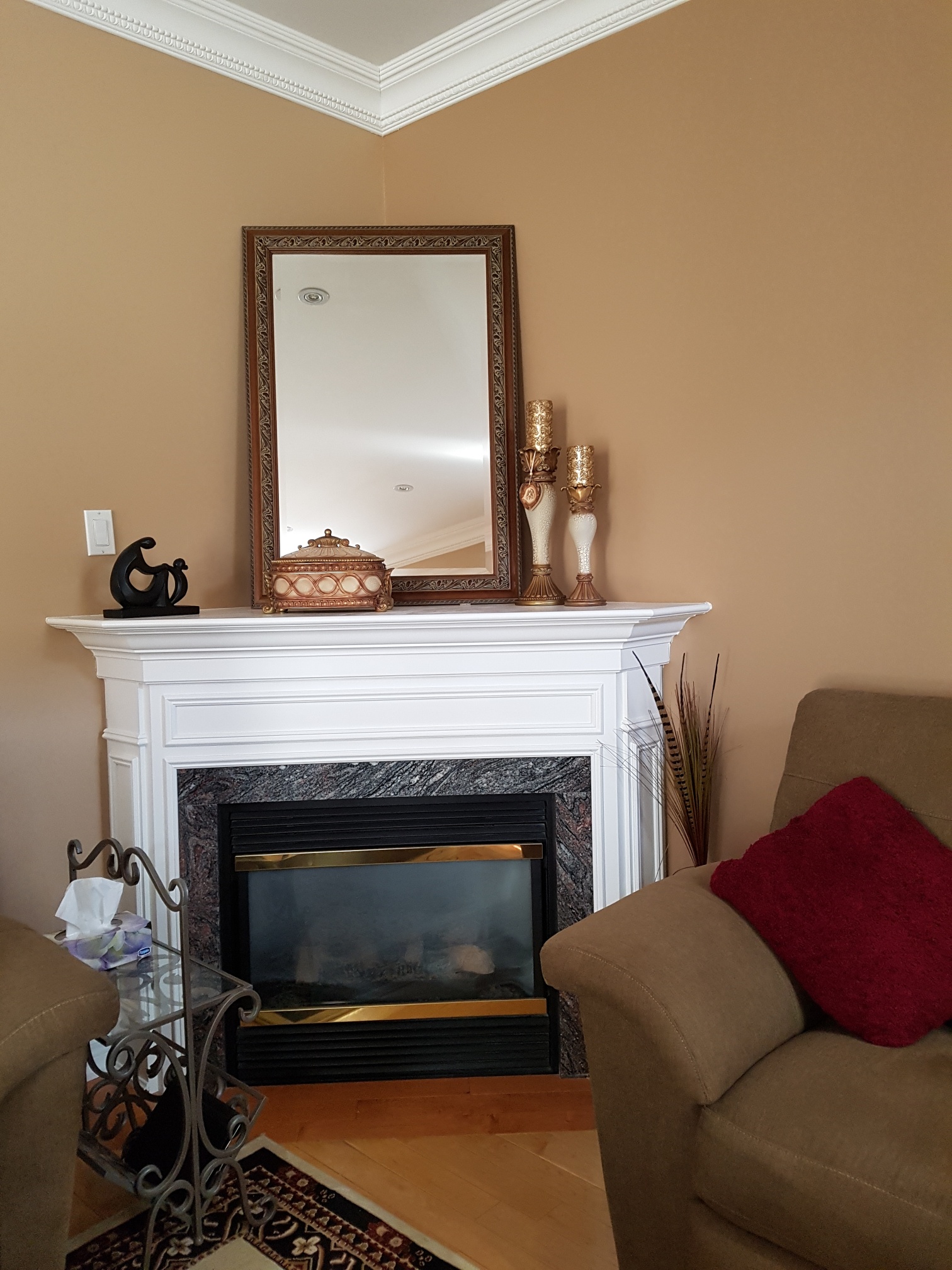As electric fireplace experts, we are often called upon to convert existing fireplaces – wood-burning and gas – to electric. It’s a relatively simple process, but not one that most people will undertake more than once. For that reason, we’ve come up with some steps that anyone can follow, to make the conversion to an electric fireplace a little smoother.
How to convert a wood-burning fireplace to electric – Determining what type of fireplace you have
There are basically two types of wood-burning fireplaces that we encounter regularly. The first is what’s known as a zero-clearance, or factory-built, fireplace. They were popular with builders in the 1970’s and 1980’s, appearing in subdivisions at a time when everyone thought they wanted a wood-burning fireplace in their suburban home. Often, they are in corner fireplaces. These fireplaces look like masonry, but are really just a brick façade with a metal insert in place of masonry. The logs are burned in the metal box, which often has glass doors on the front of the metal box. If you tap the insides of the firebox, you will hear the telltale sound of metal. The good news is that these metal boxes are almost always removable, leaving us plenty of space to add a new electric insert that’s very close to the size of the original opening. And, we can usually remove these metal fireboxes without damaging the bricks around the opening. This leaves homeowners with the option to keep the existing brick façade, or paint over it, or reface it.

The other type of wood-burning fireplace is full masonry, with firebricks inside the opening. These openings get narrower toward the back. They may or may not have a mesh screen or glass doors, but these are added to the opening after it’s built. The only way to change the size of the opening with a masonry fireplace is to break it apart. This means that we must find an insert that fits the size and shape of the existing opening, unless we are refacing the fireplace, taking down the fireplace or building a new fireplace around it. This can be much more challenging, as there is very little consistency in the size of these wood-burning openings, so there are no inserts that are guaranteed to fit.

How to convert a wood-burning fireplace to electric – Taking Measurements
Many homeowners will choose to build around the old fireplace in order to change the design and create a more contemporary design with a linear insert. In this case, all we need to know is how wide the overall fireplace façade is, from side to side, and top to bottom. If there is a hearth, we need to know if it is raised up to the height of the fire opening, or if it’s flush with the floor. We need to know how far this hearth extends from the back wall to the front of the hearth material.
If you want to keep the existing fireplace structure, and the general shape of the fireplace opening, then we need to know the width (#1 on the diagram below) and height (#2 on the diagram) of the opening, without the existing doors or screen. This means that you may need to pull the doors or screen out of the way, or open them up to find the actual size of the opening. If you have a zero-clearance (ie. metal) firebox, these measurements will be enough for us to find a suitable electric insert.
If you have a full masonry firebox, then we also need to know the width of the opening further inside the firebox (#13 on the diagram). Remember, these fireboxes get narrower toward the rear of the opening, so we need to make sure that any insert will be able to fit all the way inside the opening. All wood-burning openings are deeper than an electric insert, so depth is not a reliable measurement in determining the best insert. If you think of your masonry firebox as a trapezoid, and you think of all potential inserts as rectangles, you can understand that our challenge is to find the biggest rectangle we can, which will still fit into the trapezoidal opening. If that’s too much geometry for you, then just leave it to us. But don’t skip this measurement, as it’s the most important piece of the puzzle. Electric inserts range in depth from 7 inches to 12 inches, so you need to reach inside the opening 12 inches from the front bricks, in order to check the width. It’s better to reach in too far than not far enough.
How to convert a gas fireplace to electric – Determining what type of fireplace you have
If there is an existing gas insert in place, we need to know if it was always a gas insert or if the insert has been put into a masonry fireplace that was originally wood-burning. If the fireplace looks much like a wood-burning fireplace, with brick or stone, and a hearth in front, it may have originally been wood-burning. There will likely be a large trim around the gas insert, which was used to cover the gaps between the size of the insert and the size of the masonry opening. There would also be a chimney on the roof.


If it was originally installed as a gas insert, there may only be a tile or stone surround, and possibly a decorative wood mantel, set against the drywall. Or it may look like any other brick or stone fireplace. There would not be a chimney on the roof, but there should be a vent out the side of the house, or out the roof.
How to convert a gas fireplace to electric – Taking Measurements
If you have a masonry fireplace that’s been converted to gas, follow the process for a masonry opening, above. Remember to look behind any trim pieces, to get the true size of the opening. If your gas insert is original to the home, then follow the process for a zero-clearance opening, above.
How to convert a fireplace to electric – Electrical Requirements
Once you’ve decided to add an electric insert to an existing fireplace opening, you will need to determine how best to get power to the opening. The ideal is to run a dedicated 120 volt or 240 volt (depending on the model you want to purchase) electrical line directly into the bottom or back of the opening. This means that the new electrical cable will have to run directly from the electrical panel, which is normally in the basement. If the basement is finished, we will often run the new cable around the foundation outside the house, and drill a hole into the fireplace from the outside. If the basement is not finished below the fireplace, you may be able to run the new line across the basement ceiling and drill into the bottom of the fireplace. We do not recommend simply adding a new connection to an existing line in the room, as this means that the fireplace heater is sharing the same circuit as anything else on that line. The heaters in electric fireplaces, at their maximum output, will take all the power on a circuit, and should have a dedicated circuit breaker for that reason.
A word about the power connections left behind by gas inserts: When you remove a gas insert, you may notice that there is an electrical connection already in place. This is rarely, if ever, a dedicated circuit. It is just enough power to start the gas fireplace, and possibly power the blower. These have low-voltage requirements, and will not be the same as running the heater on an electric fireplace. If in doubt, have a licensed electrician check the line for you to determine if it’s shared or dedicated.
Converting a fireplace to electric: Electric fireplace options
Once the hard work of getting all of this information is completed, it’s time to find an electric insert that works for your situation. That’s the subject of Part 2 of this article.
Stylish Fireplaces knows that adding a fireplace to your home can be challenging. With an electric fireplace and their NFI Certified Hearth Design Specialists, it’s easy to create a space you’ll love to share with family and friends. Check out all the options and connect with their experts for help to find the perfect electric fireplace for you. You’ll be the star of your own makeover!
